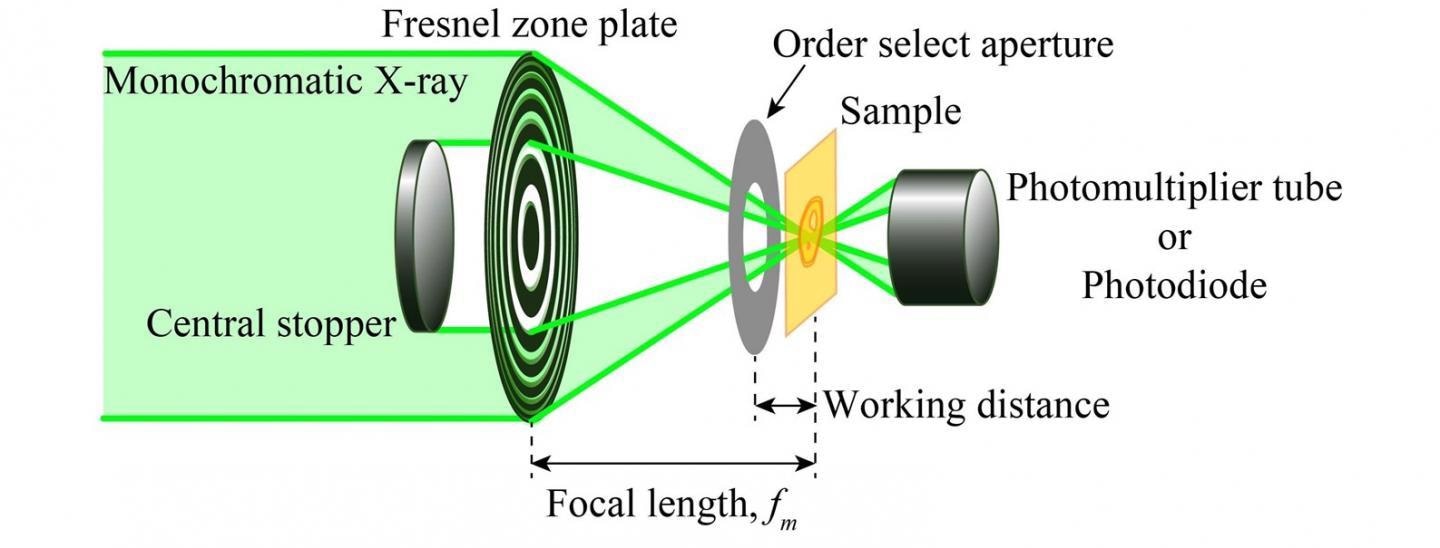Jan 15 2021
Lithium-ion batteries (LIB) are used extensively in various day-to-day products, such as cell phones, hybrid cars, etc. But despite the wide usage of these batteries, their charge and discharge process is yet to be fully understood.
 Schematic of an optical system of a scanning transmission soft X-ray microscope (STXM). Image Credit: National Institutes of Natural Sciences/Institute for Molecular Science.
Schematic of an optical system of a scanning transmission soft X-ray microscope (STXM). Image Credit: National Institutes of Natural Sciences/Institute for Molecular Science.
To learn this charge and discharge process, it is important to understand the behavior, distribution, state, and chemical composition of lithium ions.
A research team from the Institute for Molecular Science used a scanning transmission X-ray microscope (STXM)—a robust method—to conduct X-ray absorption spectroscopy (XAS) with a high spatial resolution. By utilizing the absorption edge of a particular element, scientists can achieve 2D chemical state of a sample.
However, when analyzing lithium with the STXM technique, the Li K absorption edge (55 eV) in the low-energy region renders it hard to quantify the XAS because of the absence of an accurate optical element and also due to significantly higher-order harmonics from a monochromator which tends to contaminate XAS.
Hence, to resolve these problems, the researchers developed a low-pass filtering zone plate (LPFZP)—that is, a focusing optical element of the STXM. In the LPFZP, 200-nm thick silicon is used as a substrate of the zone plate, and this substrate uses Si L2,3 edges to function as a low-pass filter above 100 eV.
The LPFZP features hybrid optics that can inhibit the higher-order harmonics without adding an extra optical constituent to the STXM.
Consequently, the STXM with the LPFZP inhibits higher-order harmonics, reducing it to 0.1% of the original intensity, and helps quantify the XAS spectra of the Li K absorption edge. The spatial resolution was later estimated at 72 nm.
The researchers examined a thin sample section of the LIB test electrode. This sample is composed of Li2CO3, which is produced by a focusing ion-beam process. The XAS spectra were effectively achieved from certain regions.
To figure out the behavior of lithium in the LIB, its performance should be improved. The STXM with the LPFZP will then prove handy to analyze the behavior with high spatial resolution.
Journal Reference:
Ohigashi, T., et al. (2020) A low-pass filtering Fresnel zone plate for soft x-ray microscopic analysis down to the lithium K-edge region. Review of Scientific Instruments. doi.org/10.1063/5.0020956.